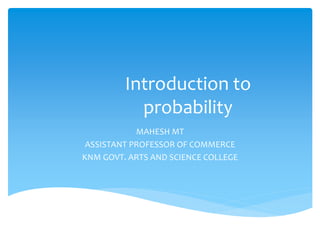The document provides an introduction to probability concepts including sample spaces, events, mutually exclusive and exhaustive events, independent and dependent events, and formulas like the addition rule and multiplication rule. It explains terms used in probability like sample points, trials, outcomes, and experiments. Various approaches to probability are discussed including classical, statistical, subjective, and axiomatic approaches.





































